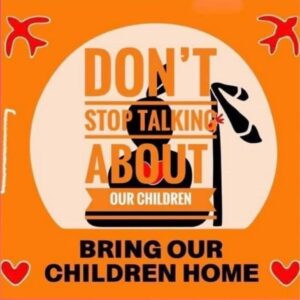Introduction
This resource could not have been created without the Indigenous teachers who have shared Secwepémc teachings and time. Of particular note are the teachings around Cḱuĺtn, a Secwepémc Way of Being. We want to thank TRU Advisor and Tk’emlúps te Secwépemc member, Garry Gottfriedson, who is also a poet and knowledge keeper, and provided the names for these teachings in Secwepemctsín, relating the physical element to the land, tmícw; the mental element to the head, sképqin; the emotional element to the heart, púsmen; and the spiritual element to your spirit, your súmec. It is TRU elder in residence and member of the Secwepemc Nation, Mike Arnouse, who reminded us how important the spirit is: “[You] should know lots about the spirit because you carry one inside of yourself.”[1]
This learning resource is dedicated to the survivors of Indian residential schools and all of the children who did not make it home. With each new discovery of unmarked and mass graves at residential schools, the picture of genocide becomes more and more clear. Included in this resource is a central case study of genocide in Canada and the role residential schools had. It serves as a great starting point for law students to learn about the history and legacy of residential schools, students are encouraged to continue their own learning journeys after.

- Mike Arnouse, “Conversations with the Elders” (2019) 4 Knowledge Makers 33. ↵
